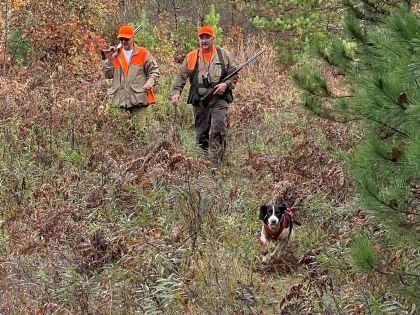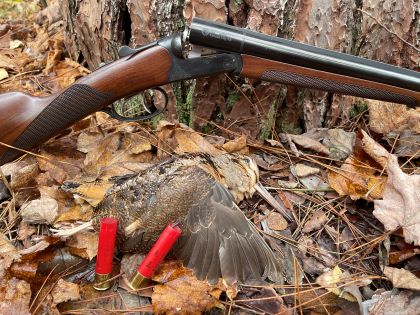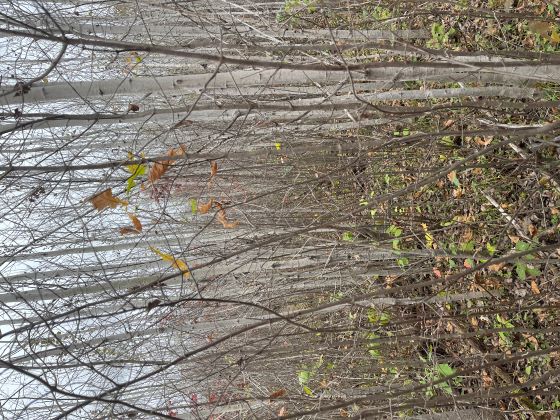The Great Migration

As an American by birth and a Southerner by the grace of God, the pursuit for Bonasa umbellus, or ruffed grouse in particular and woodcock to a lesser degree, requires some commitment and travel to arrive to the promised land of hunting these game birds.
Being a South Carolina native has its benefits and its drawbacks. We have both mountains and the ocean within a few hours from anywhere. In addition, we have temperate climate most of the year and typical Southern hospitality.
Alas, but for all the good, there are some negatives about living at the extreme range of the ruffed grouse. If by chance we stumble on a wayward grouse, it is usually confused and asking for directions to return home. A quick answer with a southern brogue sends him flying north to the boreal forests he prefers.
As hunters who delight in excellent wingshooting over fine dogs, Southern hunters are especially limited. Long gone are the glory days when the bobwhite ruled supreme in the Southern agrarian fields. In older days, every evening you were serenaded by the whistling of Bob White as he announced his location for the ladies to covey.
 Hunting prime woodcock and ruffed grouse habitat is worth the long road trip for many wingshooters.
Hunting prime woodcock and ruffed grouse habitat is worth the long road trip for many wingshooters.Sadly, if the Southern hunter is to find wingshooting, he or she must migrate annually to the areas where these birds still thrive, and nothing is more of an addiction than hunting ruffed grouse and woodcock in the Northern states of Wisconsin and Minnesota. Beginning in mid to late September, hunters begin cleaning shotguns, packing gun cases, and duffle bags for what is, for many, an annual pilgrimage. Suitcases are sorted, dogs crated, and trucks are packed to the gills for the annual migration of the wingshooter.
Mike Neiduski, the Southeast regional director of the Ruffed Grouse Society, knows well the migration route from his home of North Carolina to the land of grouse and woodcock. Nieduski takes journey every year to Wisconsin and Minnesota in search of healthy populations of the grandest of game birds.
When asked why he drives 16 hours to hunt grouse and woodcock, Neiduski says, “It is the quality of hunting, a lot of access to good quality habitat and substantial bird numbers.”
 One of the most satisfying wingshooting experiences is downing a ruffed grouse with a 28-gauge double.
One of the most satisfying wingshooting experiences is downing a ruffed grouse with a 28-gauge double.Neiduski is not wrong. The northern tier of Wisconsin and Minnesota hold excellent numbers of grouse. But what they mostly have is suitable habitat with a lot of access. Minnesota holds over 12-million acres of public land available for hunting. Wisconsin, on the other hand, has 570,000 acres of public land to access for hunting.
Nieduski explains, “The presence of grouse in the landscape is a barometer for the health of the forest.” Grouse only live in areas where the forest is healthy. Needing a heavy stem density to avoid avian predators, the grouse seek early successional forest to live, nest, and thrive.
Neiduski covers both Minnesota and Wisconsin on his annual grouse run. Lasting a few weeks from the first of October, the tour starts in Northern Wisconsin. “The area along Lake Michigan and westward provides good grouse hunting. With tens of thousands of public lands to access, there really is no reason not to go after these birds if you are a wingshooter,” he says.
 Good luck!
Good luck!Perhaps one of the best benefits of chasing grouse in October along the Great Lakes is the benefit of timing the woodcock migration. As a moderate wingshooter at best, few things are as exciting as flushing migrating woodcock on clear cold mornings. Wisconsin has a daily limit of five grouse and three woodcock, but filling those quotas in the thick alders and underbrush of these Northern woods is difficult, even for the best shot.
“I can spend about 10 miles and five or six hours to get one or two flushes in the South. But up here, I can expect at least five flushes an hour for grouse and if the woodcock are right – well, I can expect fifteen or more an hour,” Nieduski says.
 Wingshooting nirvana is a pair of woodcock taken with a 28-gauge side by side.
Wingshooting nirvana is a pair of woodcock taken with a 28-gauge side by side.For many of the hunters, the migration north is the trip they look forward to all year. A chance to spend time with old friends, plod through brambles and thickets, and hunt the grandest of game birds. It is what dreams are made of. I, too, plan the migration. A mere 18-hour drive covering 1,000 miles is a small price to pay for the joy and excitement of donning the canvas coat, the rattling of shells in my pocket, the feel of 28-gauge double gun in my hands along with the smells of wet dogs, bogs and the aroma of a fine cigar. Thinking of these things brings a smile to my face as the days unfold and a page is turned on the calendar as we await the migration.
When asked what makes the ruffed grouse the grandest of game birds, Nieduski responds, “Fine company, fine shooting and fine table fare. Grouse is the greatest of game birds because he is native to these forests. The level of difficulty to hunt them and bagging a grouse is as tough as it gets in wingshooting.”
I’d have to agree with the addition of one thing, the ruffed grouse is the most challenging of all game birds to shoot successfully. Bagging one gives the hunter a sensation seldom felt in upland forest or fields. To find some of the best grouse hunting, you must migrate to the northern states thick with cover and birds.
A freelance outdoor writer, podcaster and photographer, Pete Rogers loves everything outdoors, hunting, fishing, trapping and writing about his experiences afield. Follow him on Facebook at https://www.facebook.com/peterogersoutdoors

A freelance outdoor writer, podcaster and photographer, Pete Rogers loves everything outdoors, hunting, fishing, trapping and writing about his experiences afield. Follow him on Facebook at https://www.facebook.com/peterogersoutdoors


Comments